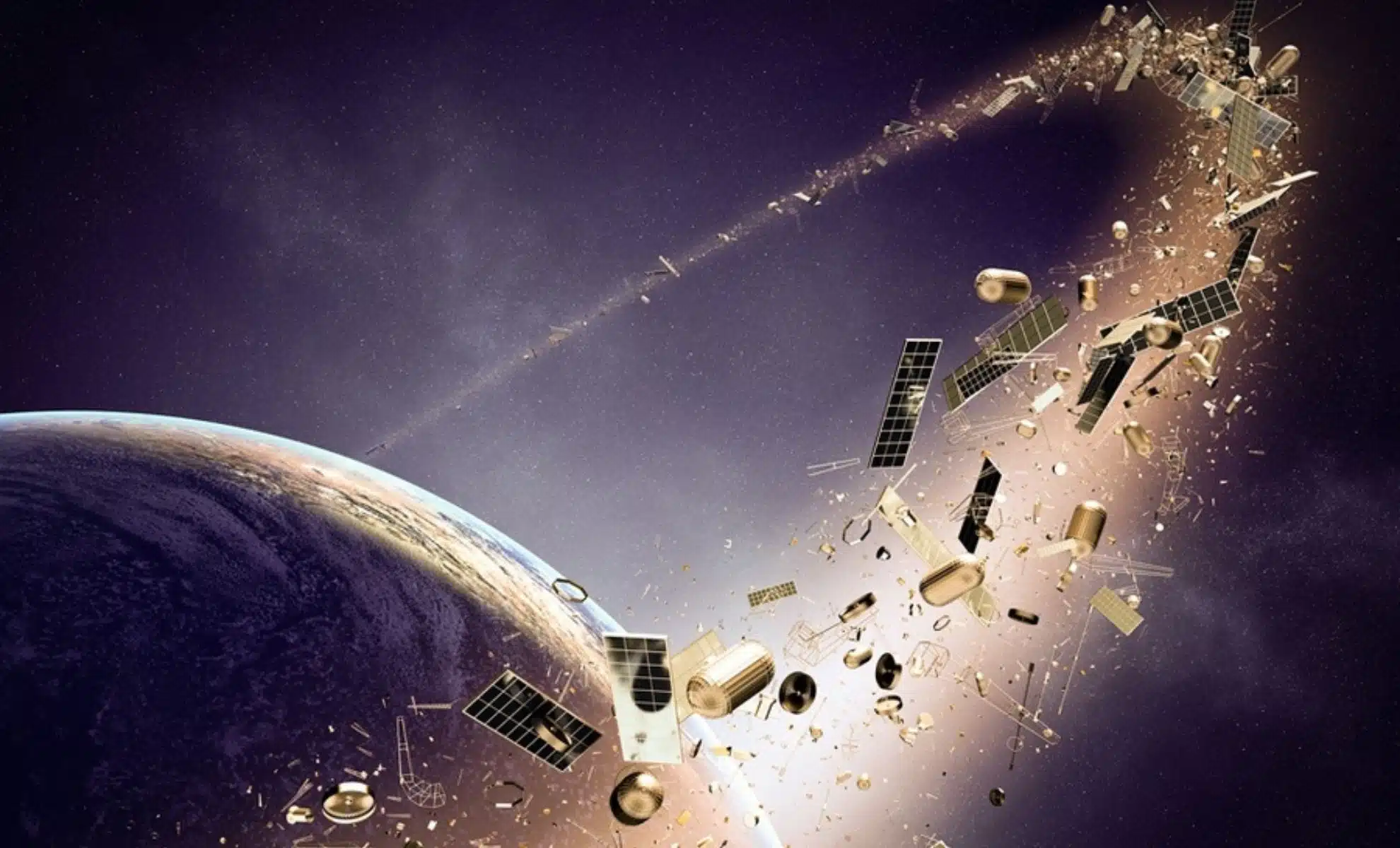
Published on May 20, 2024 10:14 By Lydia Amazouz
Collected at : https://dailygalaxy.com/2024/05/space-junk-growing-problem-in-earths-orbit/
As humanity continues its exploration and utilization of space, a significant and growing problem has emerged: space debris. Often referred to as “space junk,” this debris consists of defunct satellites, spent rocket stages, and fragments from disintegration, erosion, and collisions.
With over 160 million pieces of debris currently orbiting Earth, the threat to active satellites and future space missions is substantial. Addressing this issue is critical to ensuring the sustainable use of outer space, a topic that has garnered increasing attention from scientists, policymakers, and the public alike.
The Space Trash Signs Project
The Space Trash Signs project has created “constellations” made of defunct satellites and old rocket parts to draw attention to the worsening space junk problem. This collaboration between Privateer, Moby Digg, visual artist Frank Gräfe, and Serviceplan Innovation aims to highlight the critical issue of space junk. The project uses real space debris tracking data to form constellations that are showcased in star-gazing apps and planetarium programs worldwide.

These “constellations” are not visible from Earth but represent the vast amount of debris orbiting our planet. For example, the Broken Compass constellation above Bermuda points to potential damage to global positioning and navigational satellites if space junk were to collide with them.
The Great 404 constellation signifies the impact of destroyed internet-beaming satellites, and the Unavailable Forecast constellation highlights the risks to meteorological satellites.
The goal of this project is to raise awareness ahead of a United Nations Committee meeting on the Peaceful Uses of Outer Space, which will discuss measures to mitigate space debris.
The data used in these constellations is timestamped to mark the exact moments they were identified, providing a snapshot of the space debris problem.
The Growing Threat of Space Junk
Currently, over 160 million pieces of human-made space debris orbit Earth. These range from old satellites and used rocket stages to tiny fragments from collisions. The increasing number of satellites, especially small satellites and internet-beaming constellations like SpaceX’s Starlink, raises the risk of orbital collisions significantly.
Satellites can maneuver using thrusters to avoid collisions, but the positions of smaller debris pieces are often unknown, leading to unexpected impacts. Experts warn that without preventive measures, such as removing larger debris, space around Earth could become unusable. The situation could lead to the Kessler syndrome, a cascade of collisions that generates more debris and further impacts.
The Kessler syndrome, named after NASA scientist Donald J. Kessler, describes a scenario where the density of objects in low Earth orbit (LEO) is high enough that collisions between objects could cause a cascade of further collisions. This would exponentially increase the amount of debris, potentially rendering space activities and the use of satellites in specific orbits unfeasible for many generations.
Addressing the Issue
There are international guidelines on debris cleanup and prevention, but enforcement mechanisms are lacking. Space sustainability requires coordinated efforts to manage and mitigate space debris. The Space Trash Signs project aims to educate the public and policymakers about the urgency of addressing this issue to preserve the usability of space for future generations.
Several proposals and technologies are being developed to tackle the space debris problem. These include the use of nets, harpoons, robotic arms, and lasers to capture or deorbit debris. International cooperation is crucial, as space debris does not recognize national boundaries, and any significant collision can have global repercussions.
Future Perspectives
The future of space exploration and utilization hinges on our ability to manage and mitigate the space debris problem. As more countries and private companies enter the space arena, the need for stringent debris management practices becomes more critical.
Innovations in spacecraft design, such as building satellites that can deorbit themselves at the end of their operational lives, are steps in the right direction.

Leave a Reply